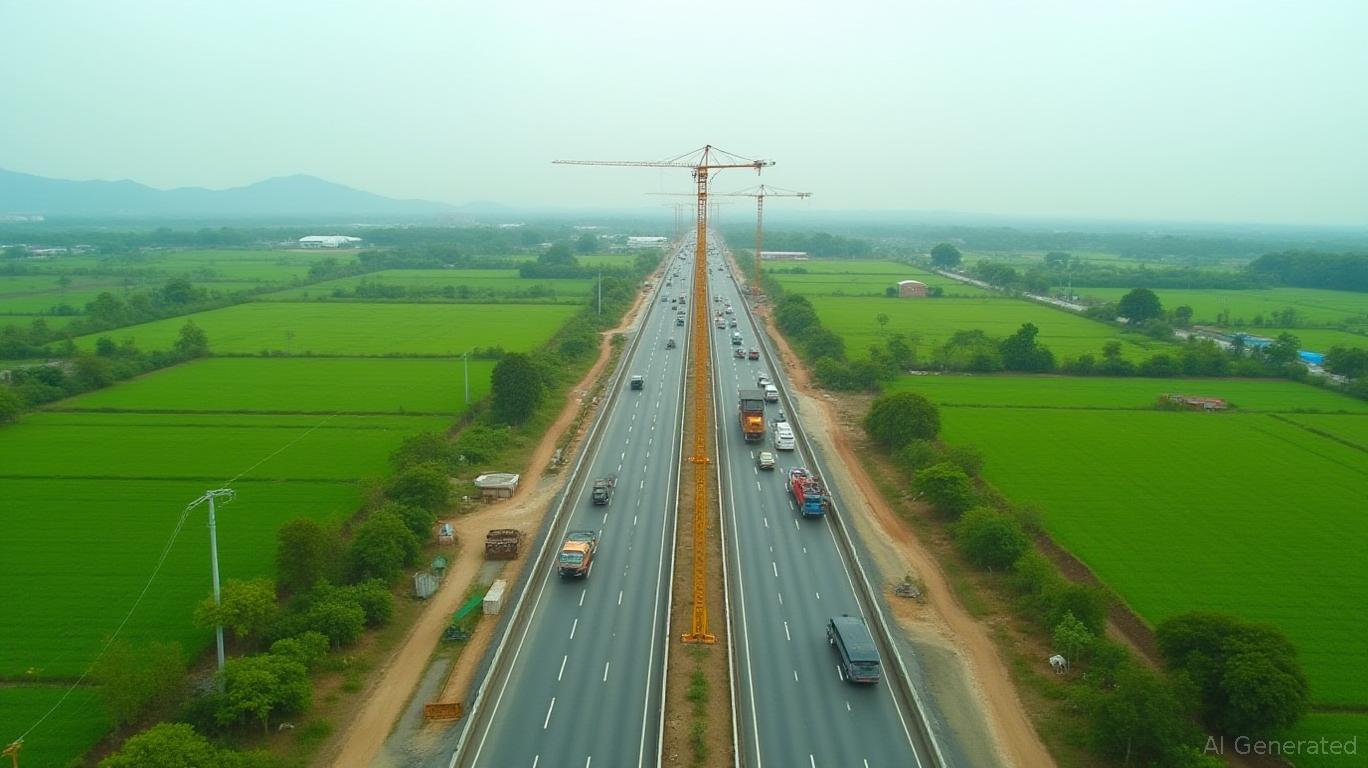The Philippines' Economic Resilience: Navigating Global Uncertainties Through Infrastructure and Policy Adjustments
The Philippine economy, despite facing global headwinds such as geopolitical tensions and fluctuating oil prices, has demonstrated surprising resilience in early 2025. With GDP growth accelerating to 5.6% in Q2—its fastest pace in two years—and the Bangko Sentral ng Pilipinas (BSP) implementing its second consecutive rate cut in June, the country is positioning itself to overcome growth shortfalls. This article explores how monetary easing and ambitious infrastructure spending are reshaping the economy, while highlighting sectors poised to thrive amid global trade uncertainties.
The Role of Monetary Policy: A Shift Toward Growth
The BSP's decision to reduce the benchmark rate to 5.25% in June 2025, marking the lowest level in over two and a half years, signals a strategic pivot toward growth support. With inflation dipping to a five-year low of 1.3% in May, the central bank has gained flexibility to cut rates further. Analysts anticipate at least two more cuts by year-end, aligning the policy rate with the BSP's neutral range of 4.75-5.0% by late 2026. This easing cycle is expected to boost borrowing and investment, particularly in construction and consumer-facing sectors.
This data visualization would show the inverse relationship between falling inflation and declining interest rates, underscoring the BSP's accommodative stance.
Infrastructure as the Engine of Growth
The “Build Better More” program, the successor to the “Build, Build, Build” initiative, is the cornerstone of the Philippines' economic strategy. By prioritizing projects such as the Luzon Spine Expressway and Central Luzon Link Expressway (CLLEX), the government aims to enhance connectivity, reduce logistics costs, and unlock rural productivity. For instance, the CLLEX—nearing completion at 96%—will cut travel time between Tarlac and Cabanatuan from 70 minutes to 20 minutes, directly benefiting Nueva Ecija's agricultural sector, a critical rice-producing region.

The focus on farm-to-market roads (FMRs) and climate-resilient infrastructure is particularly strategic. Projects like the 1.4-km FMR in Barangay Balite, funded with PHP11.64 million, exemplify efforts to strengthen supply chains and reduce post-harvest losses. The Department of Public Works and Highways (DPWH) is also finalizing an FMR master plan to systematically address rural connectivity gaps, a move that could boost agricultural GDP by 2-3% annually.
Sectors to Watch: Resilience Amid Global Uncertainties
While global trade tensions loom, several Philippine sectors are proving resistant to external shocks:
- Renewable Energy and Grid Modernization
With a target of 35% renewable energy by 2030, the Philippines is accelerating investments in wind and solar projects. Mindoro's wind energy potential—hosting two of the five wind “superhighways” identified by the World Bank—is a prime example. Renewable investments not only reduce reliance on diesel but also attract green financing from institutions like the Asian Development Bank (ADB).
This chart would highlight the surge in renewable projects, particularly in wind and solar, since 2023.
Real Estate and Data Centers
While the Philippines is not yet a global data hub, the sector's potential is significant. Data centers demand reliable electricity and cooling infrastructure—assets being bolstered by grid upgrades. With the government allocating $75 billion for infrastructure through 2025, this sector could attract tech-driven FDI, especially in Manila and Clark Freeport Zone.Human Capital and Services
The services sector, contributing over 70% of GDP, remains a powerhouse. Low unemployment (3.9% in March 2025) and rising minimum wages are fueling consumer spending, a key pillar of growth. Meanwhile, initiatives like digital entrepreneurship programs for women and youth are creating new opportunities in e-commerce and fintech.
Risks and Mitigation Strategies
Despite these positives, risks persist. A prolonged Israel-Iran conflict could spike oil prices, squeezing households and businesses. Additionally, the peso's volatility—driven by divergent global monetary policies—poses a challenge. However, the BSP's forward guidance and the ADB's commitment to fund projects like the Malolos-Clark Railway provide a safety net.
Investment Outlook: Where to Deploy Capital
- Infrastructure-Linked Stocks: Consider investments in construction firms involved in expressways, railways, and renewable energy projects.
- Renewable Energy Plays: Companies developing wind and solar farms in Mindoro or Palawan may benefit from subsidies and grid modernization.
- Consumer Discretionary Sectors: Low inflation and rising wages favor retailers, tourism operators, and e-commerce platforms.
Conclusion
The Philippines' blend of accommodative monetary policy, ambitious infrastructure spending, and sector-specific resilience offers investors a compelling value proposition. While global trade uncertainties remain, the economy's focus on connectivity, energy diversification, and human capital development positions it to sustain growth beyond 2025. For investors, this is a moment to look beyond headline risks and capitalize on the Philippines' structural transformation.
This visualization would show the upward trajectory of GDP growth, closing the gap with the government's 6-8% target by 2026.

Comments
No comments yet